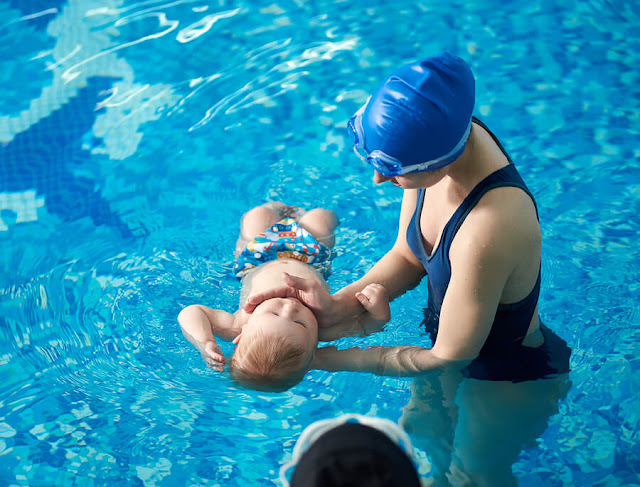Swing and movement of joints
Stretching and preparing the muscles: ideally, this second part should be done in the water to avoid temperature contrasts. The key to warming up is progression, but without getting tired.
streets and training
Just like when we play golf or go running, the terrain plays a decisive role. The same happens with the streets, although it is not usually taken into account with Lifeguard Class. Either due to lack of information or not dedicating ourselves to the competition, the lack of knowledge about the lanes of a pool can reduce our performance.
The ideal is to have a training routine on which to add slight variations. A common mistake is wanting to go further than our body allows us. Instead of increasing the speed and deforming the technique, it is preferable that we use objects that create more resistance in the water. This way we will increase our strength and the intensity of the training will also increase.
Nutrition
The need for intake varies according to our level -amateur or professional-, as well as hydration, which is fundamental in any sport. Based on this premise, we must adjust the number of carbohydrates, proteins, and vitamins depending on whether we are in periods of training or competition. As we recommend on Yalpp to improve our well-being thanks to swimming.
- Swimming as an exercise to lose weight and tone your legs
- recreational swimming
- Aquatic gymnastics and Aquathlon
Aquatic gymnastics allows us to adapt to the environment, improve our physique, tone our muscles or recover from an injury. It also serves as an introduction to swimming if we are not experienced, swimmers.
As for aquathlon, active modalities such as underwater fighting or acrobatic movements are included. In this way, we can work on breathing and our ability to concentrate.
Swam or relaxing swimming
As its name suggests, it is designed to remove stress, in line with the benefits of Pilates in our bodies. Likewise, this modality can be performed through choreography.
Sport Swimming – swimming styles
Crawl
The most popular and fastest modality is also the one preferred by swimmers during freestyle events. The kick, to propel us with the feet, and the arm cycle, which marks the breath, are details that must be polished very well to improve our resistance.
Fathom
We are faced with a style that mimics amphibians. Although it is not very showy, and it seems relaxed, executing it well is not so easy. In addition, it is the most suitable technique to be executed underwater.
Butterfly
By far the most eye-catching style of all. It is also the most difficult to master and the one that wears the most. The arms and legs, which move in unison, do not rest for an instant. In addition, sudden movements, especially in the legs, require a lot of strength.
One of the 'tricks' to mastering this style is to optimize and coordinate hip movement.
Back
A reverse variant of the front crawl. The leg and arm cycles don't vary much, and breathing is easier to coordinate. Although, this modality is slower than its original variant.
jumps
There are two subtypes, trampoline, and platform that can be executed individually or in a synchronized way.
Water polo
The team variant most closely resembles those practiced on the surface. In addition to technique and resistance, it forces us to have one more point of strength, since it is a contact sport and requires skill to float.
Synchronized swimming
Perhaps the modality most linked to women. Dancing and swimming in its purest form. Not only does perfect swimming technique count, but it also requires coordination when executing the choreography and having excellent breath control.
We are, possibly, facing the most complicated discipline along with the one that closes the list.
open water swimming
The equivalent of an athletics background. The preparation is much more intense and hard. In this modality, in addition to oneself, there are two obstacles to overcome that, on some occasions, it is impossible to do. We talked about the cold and the waves.





Comments
Post a Comment